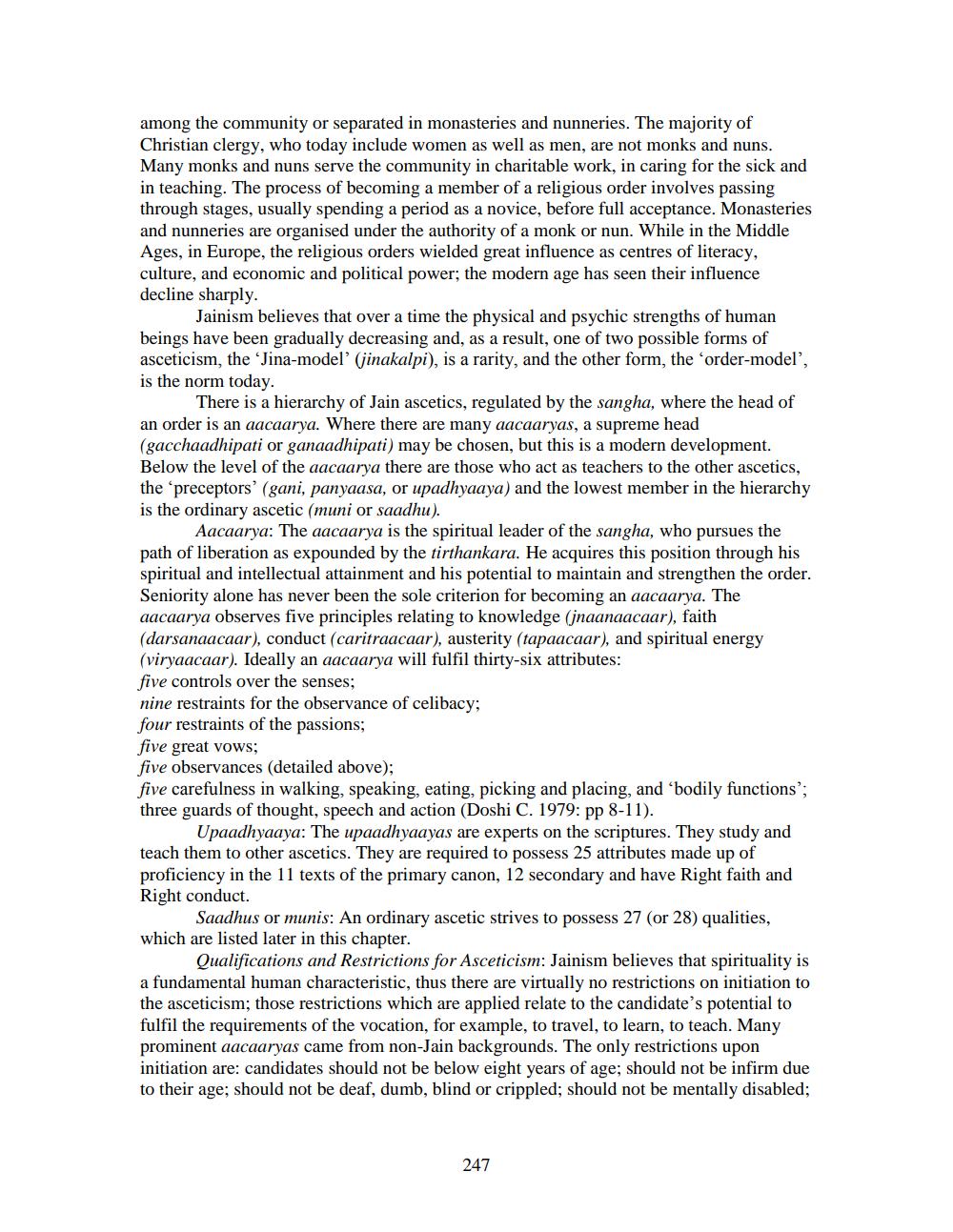________________
among the community or separated in monasteries and nunneries. The majority of Christian clergy, who today include women as well as men, are not monks and nuns. Many monks and nuns serve the community in charitable work, in caring for the sick and in teaching. The process of becoming a member of a religious order involves passing through stages, usually spending a period as a novice, before full acceptance. Monasteries and nunneries are organised under the authority of a monk or nun. While in the Middle Ages, in Europe, the religious orders wielded great influence as centres of literacy, culture, and economic and political power; the modern age has seen their influence decline sharply.
Jainism believes that over a time the physical and psychic strengths of human beings have been gradually decreasing and, as a result, one of two possible forms of asceticism, the "Jina-model' (jinakalpi), is a rarity, and the other form, the "order-model", is the norm today.
There is a hierarchy of Jain ascetics, regulated by the sangha, where the head of an order is an aacaarya. Where there are many aacaaryas, a supreme head (gacchaadhipati or ganaadhipati) may be chosen, but this is a modern development. Below the level of the aacaarya there are those who act as teachers to the other ascetics, the 'preceptors' (gani, panyaasa, or upadhyaaya) and the lowest member in the hierarchy is the ordinary ascetic (muni or saadhu).
Aacaarya: The aacaarya is the spiritual leader of the sangha, who pursues the path of liberation as expounded by the tirthankara. He acquires this position through his spiritual and intellectual attainment and his potential to maintain and strengthen the order. Seniority alone has never been the sole criterion for becoming an aacaarya. The aacaarya observes five principles relating to knowledge (jnaanaacaar), faith (darsanaacaar), conduct (caritraacaar), austerity (tapaacaar), and spiritual energy (viryaacaar). Ideally an aacaarya will fulfil thirty-six attributes:
five controls over the senses;
nine restraints for the observance of celibacy;
four restraints of the passions;
five great vows;
five observances (detailed above);
five carefulness in walking, speaking, eating, picking and placing, and 'bodily functions'; three guards of thought, speech and action (Doshi C. 1979: pp 8-11).
Upaadhyaaya: The upaadhyaayas are experts on the scriptures. They study and teach them to other ascetics. They are required to possess 25 attributes made up of proficiency in the 11 texts of the primary canon, 12 secondary and have Right faith and Right conduct.
Saadhus or munis: An ordinary ascetic strives to possess 27 (or 28) qualities, which are listed later in this chapter.
Qualifications and Restrictions for Asceticism: Jainism believes that spirituality is a fundamental human characteristic, thus there are virtually no restrictions on initiation to the asceticism; those restrictions which are applied relate to the candidate's potential to fulfil the requirements of the vocation, for example, to travel, to learn, to teach. Many prominent aacaaryas came from non-Jain backgrounds. The only restrictions upon initiation are: candidates should not be below eight years of age; should not be infirm due to their age; should not be deaf, dumb, blind or crippled; should not be mentally disabled;
247




